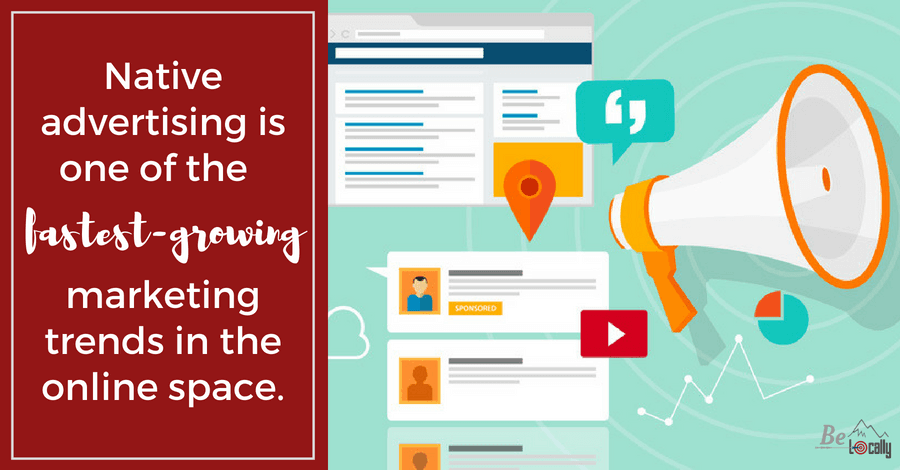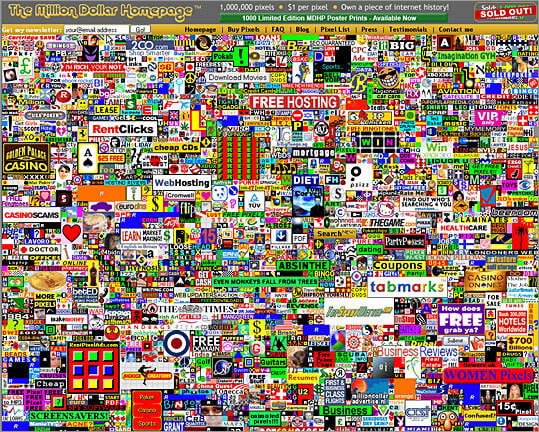In the internet marketing industry, terms like native advertising can cause some confusion, particularly for anyone who isn’t familiar with all the jargon we typically use to describe our services.
Native advertising is a form of paid digital marketing wherein paid content is designed and formatted to match the non-paid content around it. You may be more familiar with the term sponsored content or even advertorial.
Whatever you call it, this internet marketing technique has some benefits and some potential pitfalls. Nevertheless, it’s one of the fastest-growing marketing trends in the online space.

Whether native ads can work as a part of your overall digital marketing strategy depends on how you use them — and how often.
The Native Advertising Institute defines native advertising as “… paid advertising where the ad matches the form, feel and function of the content of the media on which it appears.”
Sponsored social media posts are some of the most familiar forms of native ads, but you’re probably also familiar with paid TV programming, known as infomercials. Advertorials, although less popular than they used to be in the heyday of print media, are still a viable option.

Today, native ads can take virtually any form, potentially resembling news stories, featured articles, product reviews, directory listings or any other graphic or text-based object.
Possibility the most ubiquitous form of native advertisements we deal with today is Google’s AdWords pay-per-click (PPC) platform. If you look closely at the search engine results pages (SERPs) in Google, you’ll notice a tiny little green box with the word “Ad” in it next to the top few results (and probably the bottom few results as well).
Like any successful marketing or advertising platform, native ads are extremely popular today because they work.
Devotees say these ads produce a favorable return on investment (ROI) because audiences often perceive a greater value in sponsored content than in other types of paid advertising.
The research seems to support this assertion. In fact, consumers look at native advertising 53 percent more often than display ads. If you run an in-feed native ad, you’re likely to get 25 percent more exposure than you would with a display ad. Finally, consumers were almost twice as likely to share an in-feed native ad with friends and family, as compared to display ads.
Perhaps most shocking, consumers apparently take notice of in-feed ads slightly more than regular content and they spend almost as much time viewing them!

Countless business owners and marketing managers praise this form of internet marketing for its high-value, low-cost performance. Detractors tell a different story, however.
The naysayers assert that this type of internet marketing only works because people believe they’re seeing organic content, failing to observe that it’s actually a paid form of advertising — although all types of paid ads and sponsored content must follow the U.S. Federal Trade Commission (FTC) truth-in-advertising laws banning false or deceptive advertising.
Consumers can also be wary of sponsored content, especially since Facebook and other social platforms have reported past abuse of these platforms for nefarious (and potentially illegal) purposes.
The last risk we should address is overusing native ads and sponsored content. If your audience never sees any organic content or posts in your feed, it could hurt your brand identity by eroding the trust of your prospects and clients.

You can use native advertising in a variety of ways to help achieve your marketing goals.
The first order of business, should you decide to explore the world of native advertising, is to learn the rules. You can start by checking out the FTC native advertising guidelines, which emphasize the requirement to make “clear and conspicuous disclosures” within the ad’s content if it could potentially mislead the public in any way.
Fortunately, if you’re using AdWords or running a sponsored post on Facebook, you don’t have to worry, as both are clearly labeled to indicate they’re paid items (although the “Ad” tag in the Google SERPs used to be more obvious than it is today). However, beware of less high-profile publishers, as Forbes reports that almost 40 percent of publishers fail to follow FTC rules for identifying paid content.
Whether you choose to run promoted pins on Pinterest, sponsored posts on Facebook, promoted tweets on Twitter or sponsored content in a publication, make sure you include an engaging title and well-written content that provides value to your audience.
Yes, you’re paying to put your information in front of targeted prospects, but they won’t click through unless you solve a problem, answer a question or give them something that they think they need.
If you think your company might benefit from using this or other digital marketing platforms, let Be Locally SEO help you find the right marketing mix to meet your goals. We assist clients in Utah and throughout the United States with SEO, local SEO, AdWords campaigns, sponsored and promoted social media posts and content marketing.
Contact us today to learn more about how we can leverage native advertising as a part of your comprehensive internet marketing strategy.
